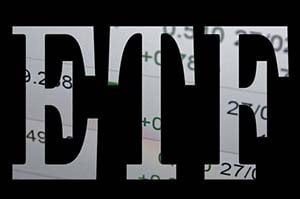Editor's Note: Passive investing is more popular than ever, but it comes with unique risks. Shah detailed those dangers after "Black Monday," the 2015 market plunge that wreaked havoc on ETFs. He also shared a safer way to play these trading tools. Here's what he suggested...
In the investment markets - the portions that affect you and me - exchange-traded funds (ETFs) have emerged as the ultimate market disruptor.
This massive shift is due to more than investor fickleness. ETFs trade all day like stocks - making them better than mutual funds. There are more than 1,500 of them, according to ETF.com. There's an ETF for almost every industry, index, asset class, and risk-exposure play you can think of.
ETFs are modern-day magical trading tools.
But if you know anything about magic, you know there are times where the trick goes awry.
The hat lacks the rabbit.

The woman in the box actually does get cut in half.
The same types of tragedies can befall ETF investors. It's rare. And it's not intentional - it's just what happens when the magic trick doesn't work... as millions of ETF investors and traders just found out the hard way on Aug. 24, 2015.
Here's what happened, what's going to happen again, and a strategy that will protect you - without having to "cash out" and hide yourself on the sidelines.
And back here, I'm going to show how to make the ETF magic work for you... as long as it holds.
In short, I'm going to give you the best of both worlds...
Problems for ETFs on Black Monday
On the morning of Aug. 24, 2015, all hell broke loose in ETF land.
The "magic box" didn't work.
Before the open that morning, stock market futures indicated the Dow Jones Industrial Average could open down 1,000 points. Almost all stocks that opened traded down.
Learn How to Turn $500 into $1 Million: This Sunday School teacher's "retirement career" made him a millionaire. This book will teach you how you can do it too. Claim your FREE copy...
A lot of those stocks were temporarily halted when they reached "limit up/limit down" levels. Lots of stocks didn't open near the time they should have. Against that backdrop - throughout the morning - futures prices were swinging widely and triggering their own halts.
This magical breakdown created a wicked problem for ETFs.
Here's why.
[mmpazkzone name="in-story" network="9794" site="307044" id="137008" type="4"]
An ETF is actually a portfolio of stocks, futures, bonds, or other financial instruments. On a typical trading day, those "underlying" instruments change hands with no hiccups.
But if any of those ETF holdings stop trading, are halted, or experience pricing problems, it's impossible to accurately calculate the net asset value (NAV) of the ETF.
That happened a lot on Aug. 24. In fact, 327 separate ETFs were halted for at least five minutes that day. Eleven were halted more than 10 times that day, according to TD Ameritrade.
While the halts are a problem if an investor desperately wants to get out and can't - or the ETF reopens a lot lower - what was worse was that ETFs kept trading... even though some of their underlying holdings seized and stopped trading.
The prices of the ETFs that kept trading collapsed. That's because the "market makers" - the big-firm traders that ETF sponsors hire to keep their funds trading - suddenly didn't want to do the job they were hired for.
These traders - technically known as "authorized persons" - didn't want to buy ETF shares from sellers at a bad price and then have to sell them lower at a worse price, losing a hefty amount of money in the process.
A Major Mismatch
How ETFs are created and redeemed is a magic trick itself. A "sponsor" - BlackRock Inc. (NYSE: BLK), for example - hires a trading desk to create ETF "units," or shares. It does that by snapping up the underlying shares in a big enough quantity to make the ETF come to life.
When there are a lot more sellers than buyers for a particular ETF - meaning the total assets of the fund decline - the authorized participants sell all the underlying shares in the portfolio and redeem (wipe out) excess ETF shares. That's how ETFs get smaller in size, when shares are redeemed.
That brings us back to that August morning. Investors were furiously selling ETF shares - and stocks were being halted or not opening at all. That meant it was impossible to accurately price the ETFs.
The authorized participants knew they would have to redeem a lot of ETF units - even as they kept trading and making a market for them... widening the "bid" and "ask" spreads on those funds.
ETF share prices collapsed.
For instance, even though the S&P 500 fell as much as 5.4% at one point, the PowerShares S&P Low Volatility ETF (NYSE Arca: SPLV) fell 46%.
It recovered as the day went on.
If you were one of the investors who sold your SPLV at the market low that morning, only to see it bounce back for purely mechanical reasons, you'd be hurting.
In fact, you'd be downright sick.
That happened a lot that day.
How to Protect Yourself from ETF Black Magic
Now you know what happened.
And know that it can happen again. That it can happen any time there are mispricing issues - or outright halts - in the stocks or bonds held by any ETF you own.
Until the U.S. Securities and Exchange Commission figures out what to do about it - or the ETF sponsors figure out a solution - you could be the "lady in the box" when the ETF magic is killed by a steeply falling market.
There is a move you can make, though.
You can change your "market stop" orders to "stop limit" orders.
If you do this - and prices collapse way below where you have market-stop-loss order - at least you won't get the worst price. That's because a stop-limit order gets you out of your position if your stock or ETF trades at, or below, your designated limit order, but gets you out at the limit price you've designated.
Of course, that's not a perfect solution to the problem. With a stop-limit order, your stock could trade below your limit and not ever come back up to your limit where you'd get out.
Using a stop-limit order only helps you if the ETF is so badly mispriced that it falls way below where it otherwise should be trading and then bounces back after all stocks are opened, all halts have been lifted, and hopefully your price recovers in the process.
These Trade Recommendations Are CRUSHING the Market
The major indexes are driven by a few overpriced stocks. The rest of them - I'm talking thousands of stocks - are garbage.
But targeting the market's worst stocks is a great way to get rich. So long as shares are plummeting, you could be making a killing again and again.
And I'm the one person able to identify which stocks have about a 100% chance of dropping to the ground.
Since April 21, my Zenith Trading Circle recommendations have outperformed every investment on the market with average gains of 44% per day (including partial closeouts).
In fact, one of my latest plays closed out with a 955% return.
Don't cheat yourself out of the chance at thousands up for grabs here. Click here to learn more.
About the Author
Shah Gilani boasts a financial pedigree unlike any other. He ran his first hedge fund in 1982 from his seat on the floor of the Chicago Board of Options Exchange. When options on the Standard & Poor's 100 began trading on March 11, 1983, Shah worked in "the pit" as a market maker.
The work he did laid the foundation for what would later become the VIX - to this day one of the most widely used indicators worldwide. After leaving Chicago to run the futures and options division of the British banking giant Lloyd's TSB, Shah moved up to Roosevelt & Cross Inc., an old-line New York boutique firm. There he originated and ran a packaged fixed-income trading desk, and established that company's "listed" and OTC trading desks.
Shah founded a second hedge fund in 1999, which he ran until 2003.
Shah's vast network of contacts includes the biggest players on Wall Street and in international finance. These contacts give him the real story - when others only get what the investment banks want them to see.
Today, as editor of Hyperdrive Portfolio, Shah presents his legion of subscribers with massive profit opportunities that result from paradigm shifts in the way we work, play, and live.
Shah is a frequent guest on CNBC, Forbes, and MarketWatch, and you can catch him every week on Fox Business's Varney & Co.



